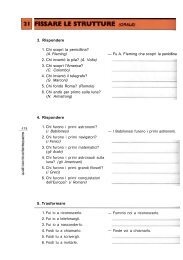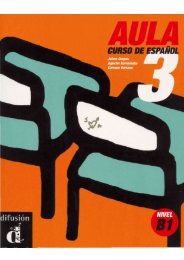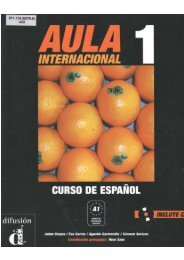III. The Beginnings of Transformation
III. The Beginnings of Transformation
III. The Beginnings of Transformation
Create successful ePaper yourself
Turn your PDF publications into a flip-book with our unique Google optimized e-Paper software.
BEGINNINGS OF TRANSFORMATION<br />
Rukn al-Din burned the town <strong>of</strong> Laodiceia Combusta forty kilometers<br />
north <strong>of</strong> Konya at the end <strong>of</strong> the twelfth century for having mistreated a<br />
member <strong>of</strong> the dynasty. 188<br />
<strong>The</strong> fact that Kîlïdj II Arslan rebuilt Coloneia<br />
Archelais (Aksaray) would seem to imply, much in the same manner as<br />
Caesareia and Sebasteia, that it too had suffered devastation. 189<br />
This detailed, yet incomplete, survey <strong>of</strong> Anatolia during the latter<br />
part <strong>of</strong> the eleventh and the twelfth century indicates that violence,<br />
destruction, and upheaval accompanied the Turkish invasions and<br />
occupation <strong>of</strong>the peninsula. Consequently, the lament <strong>of</strong>Anna Comnena<br />
on the fate <strong>of</strong> Byzantine Anatolia constitutes something more than an<br />
empty rhetorical exercise:<br />
And since the succession <strong>of</strong> Diogenes the barbarians tread upon the boundaries<br />
<strong>of</strong> the empire <strong>of</strong> the Rhomaioi . . . the barbarian hand was not restricted until the<br />
reign <strong>of</strong> my father. Swords and spears were whetted against the Christians, and<br />
also battles, wars, and massacres. Cities were obliterated, lands were plundered,<br />
and the whole land <strong>of</strong> the Rhomaioi was stained by bIood <strong>of</strong> Christians. Some fell<br />
piteously [the victims] <strong>of</strong> arrows and spears, others being driven away from their<br />
homes were carried <strong>of</strong>f captives to the cities <strong>of</strong> Persia. Terror reigned over all and<br />
they hastened to hide in the caves, forests, mountains, and hills. Among them<br />
some cried aloud in horror at those things which they suffered, being led <strong>of</strong>f to<br />
Persia; and others who yet survived (if some did remain within the Rhomaic<br />
boundaries), lamenting, cried, the one for his son, the other for his daughter.<br />
One bewailed his brother, another his cousin who had died previously, and like<br />
women shed hot tears. And there was at that time not one relationship which<br />
1 9 0<br />
was without tears and without sadness.<br />
Obviously in some areas the destruction was greater; in other areas, less<br />
severe. It cannot be maintained that the Turkish conquest operated with<br />
ease and without serious disturbance <strong>of</strong> Anatolian society. On the other<br />
hand, it would be just as erroneous to assert that the destruction was<br />
complete.<br />
his army slew 7,000 Muslims. Ginnamus, 45. Histoire des Seljoukides d'Asie Mineure par un<br />
anonyme, trans. F. Uzluk (Ankara, 1952), pp. 24-25. Frederick Barbarossa also burned<br />
the city during the Third Crusade. Nicetas Choniates, 542.<br />
1 8 8<br />
Ibn Bibi-Duda, pp. 22-23.<br />
1 8 9<br />
Uzluk, Histoire des Seljoukides, p. 25. <strong>The</strong> Geographical Part <strong>of</strong> the Nuzhat-al-Qulub<br />
composed by Hamd-allah Mustawfi qf Qazwin in 740 (1340), trans. G. Le Strange (London,<br />
1919), p. 96, relates that Kïlidj II Arslan rebuiltit in 1171 (hereafter cited as 0_azwini-<br />
Le Strange). <strong>The</strong> Tarikh-i-guzida or "Select History" <strong>of</strong> Hamdullah Mustawfi-i-Qazwini,<br />
E. G. Browne (Leiden-London, 1913), p. 108.<br />
l64






